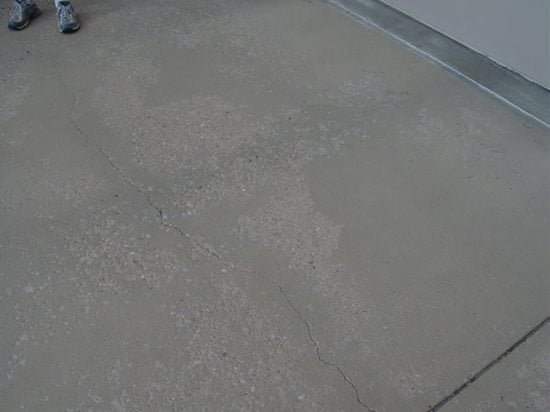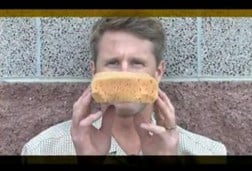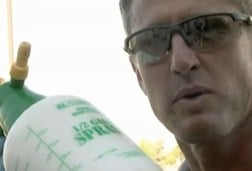- Concrete Repair Home
- Surface Repairs
- Structural Repairs
- Slab Repairs
- Concrete Crack Repair
- Common Concrete Repairs
- Stamped Concrete Repair
- Driveway Repair
- Pool Deck Repair
- Garage Floor Crack Repair
- Fix Spalling Concrete
- Make New Concrete Match Old
- How to Fix Pitted Concrete
- Concrete Repair Methods & Systems
- Concrete Crack Injection for Basements
- Why Concrete Cracks
- Sunken Concrete Foundations
- Repairing Bowed Basement Walls Using a Carbon-Fiber-Reinforced Grid
Spalled Concrete Driveway - Fixing Spalling Issues

Spalling caused by freezing and thawing and deicing chemicals leaves
ugly pits in a concrete driveway.
- Question:
-
What caused this surface failure on my integrally colored concrete driveway, and what can I do to repair it? The driveway is 6 years old and 1,000 square feet in size, but only a few hundred square feet directly in front of the garage doors show signs of failure.
- Answer:
-
This type of surface failure, known as spalling or scaling, is more common in colder climates where freeze-thaw cycles and deicing chemicals are prevalent. Freezing causes the water in the capillaries of the concrete to expand, creating pressure. Over time, the expansive pressure from repeated cycles of freezing and thawing can break away the top surface of the concrete, leaving pit marks and exposing the coarse aggregate. Deicing chemicals only aggravate the already-stressed concrete by allowing more water to migrate into the concrete, thus increasing the size and depth of the spalling failures when a freeze occurs. That's why the problem occurred only in front of the garage, where the cars are often parked. Deicing chemicals picked up from the road dripped onto the surface, allowing water to permeate that area.
On new concrete, you can dramatically reduce water-induced spalling by applying a penetrating waterproofing sealer 28 days after concrete placement and every few years thereafter. To address the problem after it has occurred requires covering the entire affected area with a polymer-modified cementitious overlay in a color matching the existing driveway. Once the overlay cures, apply a waterproofing sealer to prevent the problem from reoccurring.
For more information about the effects of deicers, read this tech sheet from the Portland Cement Association: Winter Weather, Deicers Need not Damage Concrete.
SPALLED CONCRETE IN A NEW DRIVEWAY
Question:
I had a new driveway installed last fall, and the following spring the surface began to flake away in some areas. The driveway isn't even a year old. Why is this happening?
Answer:
Sealers are a great way to protect concrete from spalling deterioration. A good-quality sealer designed for use on exterior concrete will help minimize water saturation and protect against salt damage. Even with a good sealer, the concrete itself remains the most important component in avoiding spalling (see The Correct Concrete Driveway Mix). In most cases, spalled concrete is caused by poor finishing and the use of water on the surface to aid in the finishing process. Excess water and overfinishing create a weak surface that can't handle freeze-thaw expansion and contraction. You should always get a signed contract with a concrete installer with specific warranty language dealing with spalling and cracking. To fix the spalling, you may need to resurface the driveway with an overlay (see How to Fix Spalled Concrete).
Author Chris Sullivan, ConcreteNetwork.com technical expert and vice president of sales and marketing for ChemSystems Inc.
 High Performance Concrete Repair
Fast setting mix for structural repairs
High Performance Concrete Repair
Fast setting mix for structural repairs
 Divot Patch - Concrete Repair
15-minute set time
Divot Patch - Concrete Repair
15-minute set time
 Crack-Weld
5-minute set time
Crack-Weld
5-minute set time






